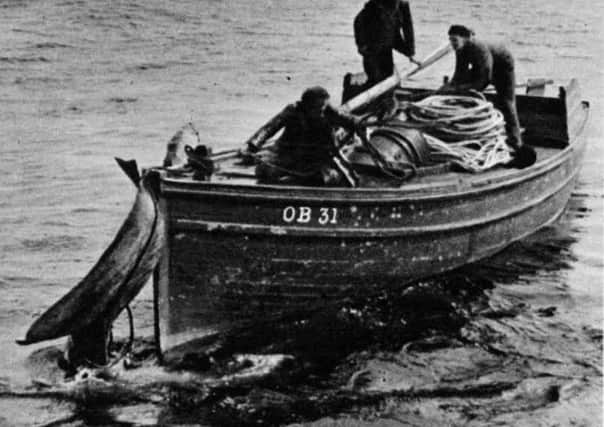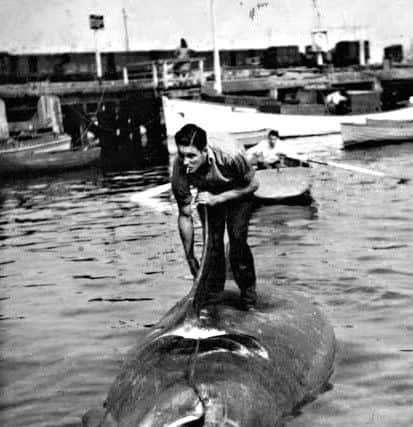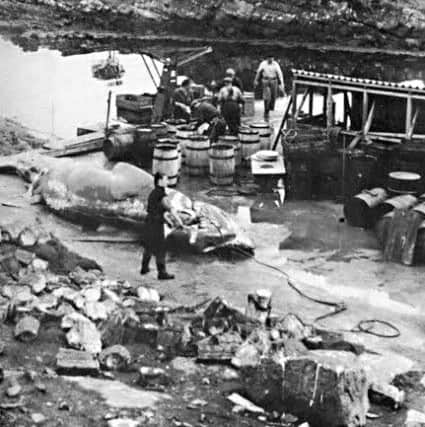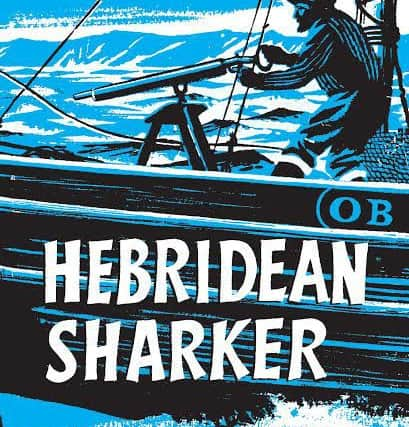The shark hunters of the Hebrides


Basking sharks became a lucrative catch with fragile island communities often investing heavily in the equipment required to land one of the beasts, which typically measure 30ft long.
Naturalist Gavin Maxwell, author of Ring of Bright Water, was amongst Scotland’s most prolific shark hunters after buying the Isle of Soay off Skye following World War Two and setting up a processing plant to handle the lucrative liver oil, known as squalene.
Advertisement
Hide AdAdvertisement
Hide AdIt is said that the average-sized basking shark contains around 400kg to 500kg of oil, then used for lighting and now more commonly found in cosmetics and toiletries, with the butter-coloured liver making up a quarter of its body weight.


Maxwell’s enterprise was tough and bloody as he experimented with different types of weaponry with the mighty fleshy sharks often ferociously battling for their life long after they had been shot or harpooned.
Despite his experimental efforts, Maxwell’s business did not prove a success and he sold the enterprise to his business partner, Peterhead-born Tex Geddes, a fellow veteran of the war who he met at Meoble Lodge near Lochailort, a special operations training base.


Geddes who was also regarded as a boxer, a knife thrower and rum runner, became laird of Soay after buying the island with his wife Jeanne in 1952.
In his book Hebridean Sharker, published by Birlinn, Geddes describes harpooning a “great number of sharks first of all with hand harpoons” with Maxwell, much in the “fashion of Moby Dick” from a 30ft launch.
He added: “In retrospect some of our early hand harpoons appeared ridiculously inadequate; we might as well have tried to catch a shark with a kitchen fork.”
Geddes said he would never forget the spectacle of towing his first shark into Mallaig harbour “should I live to be a hundred.”


Advertisement
Hide AdAdvertisement
Hide AdHe said: “First his head reared out of the water, like some prehistoric monster seen in a nightmare and then disappeared beneath the surface with a great swirl of foam, to be followed by his huge tail which hung poised momentarily in the air, before slapping down on the water with a report like gun-fire which could be head above our exultant roars.”
It is estimated that more that 100,000 basking sharks were removed from the North Atlantic, with a number of fishing stations set up in Scotland in Ireland, during the 20th Century.
Small bounties were paid to remove the sharks from the water given damage caused to fishing nets and fish stocks.
Records of shark hunting exist on Mingulay in the Outer Hebrides as far back as 1819.


In ‘Mingulay, an Island and its People’ by Ben Buxton, an account of 40 or 50 basking sharks, or caerban in Gaelic, coming into Mingulay Bay in the 1840s is recorded.
The account, by naturalist Harvie Brown, said: “The natives killed large numbers for the sake of the oil found in their livers. The natives found this lucrative, so much so, that the procured harpoons on purpose by steamers from Glasgow.”
Winners of a £1 premium for catching basking sharks - also referred to as sun fish - were recorded in 1819, according to Buxton.
Advertisement
Hide AdAdvertisement
Hide AdHector Campbell of the boat Kelly, sold 60 gallons (272 litres) of oil while Roderick MacNeil of the boat, Mary, of Sandray, sold 295 gallons.
Hunting for basking sharks was not outlawed in Scotland until 1998 with the last fisherman, Howard McCrindle, working out of Cumbrae.
